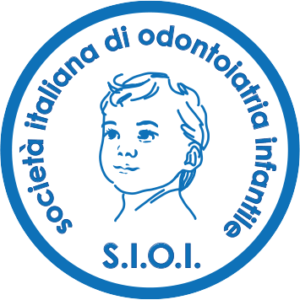This is the official website of the European Journal of Paediatric Dentistry. It is an open access journal and its whole content is available free of charge, including download of the acrobat files of the papers published in the journal.

Current Issue
Early Childhood Caries: a Family-Centred Disease
Authors: L. Paglia
Volume: 26
Issue:2
Publication date: June 2025
Pag: 87– 87
Wear behaviour of different bioactive restorative materials
Authors: A. V. Brescia, A. Mastroianni, L. Montesani, M. D. Anastasio, G. Baiocco, N. Ucciardello, R. Docimo
Volume: 26
Issue:2
Publication date: June 2025
Pag: 90– 94
Prevalence of dental caries in 3-6-year-old children in Prishtina, Kosovo
Volume: 26 Issue:2 Publication date: June 2025 Pag: 95– 99Influence of different ethnicities on early childhood caries in preschool children at risk of social exclusion in Southeastern Spain
Authors: Y. Martínez-Beneyto, I. Navarro-Vera, C. Serna-Muñoz, A. J. Ortiz-Ruiz, A. Vicente, J. M. Montiel-Company
Volume: 26
Issue:2
Publication date: June 2025
Pag: 100– 104
Comparison between manual vs electric powered toothbrush by using the PCR index in paediatric dentistry
Authors: F. S. Ludovichetti, A. G. Signoriello, E. Trevisiol, A. Gracco, E. Stellini, A. Zuccon, S. Mazzoleni
Volume: 26
Issue:2
Publication date: June 2025
Pag: 105– 109
Children’s toothbrushing: a population survey on behaviours, attitudes, and knowledge in parents of Callao, Peru
Volume: 26 Issue:2 Publication date: June 2025 Pag: 110– 119Dental pain in children: pharmacological management
Volume: 26 Issue:2 Publication date: June 2025 Pag: 120– 124Combined surgical luxation and orthodontic traction treatment of a severely infraoccluded primary molar with deep caries: a case report and literature review
Volume: 26 Issue:2 Publication date: June 2025 Pag: 125– 129Developmental defects of enamel in childhood cancer survivors: A systematic review and meta-analysis
Volume: 26 Issue:2 Publication date: June 2025 Pag: 130– 139Artificial intelligence system for automatic tooth detection and numbering in the mixed dentition in CBCT
Authors: S. Ozudogru, E. Gulsen, T. Mahyaddinova, F. N. Kizilay, I. T. Gulsen, A. Kuran, E. Bilgir, A. F. Aslan, O. Celik, I. S. Bayrakdar
Volume: 26
Issue:2
Publication date: June 2025
Pag: 140– 146
Enamel hypoplasia and enamel pre-eruptive hypomineralisation in the secondary dentition: a narrative review of literature
Authors: S. Daniele
Volume: 26
Issue:2
Publication date: June 2025
Pag: 147– 152
Permanent First Molar Eruption Failure in Children: clinical management of three clinical scenarios
Volume: 26 Issue:2 Publication date: June 2025 Pag: 153– 158Dental Diseases in Premature Infants: A Pilot Study on Delayed Tooth Eruption During the First 12 Months of Life
Volume: 26 Issue:2 Publication date: June 2025 Pag: 159– 164SIOI Policy on nitrous oxide/oxygen anxiolysis in Paediatric Dentistry
Authors: S. Arcari, M. Moscati, M. R. Giuca, V. Di Taranto, S. Bagattoni, M. Beretta, M. Cadenaro, S. Caruso, P. De Fabianis, R. Del Conte, L. Lardani, R. Gatto, G. Marzo, G. Damia, L. Paglia, G. Gallusi
Volume: 26
Issue:2
Publication date: June 2025
Pag: 165– 168





